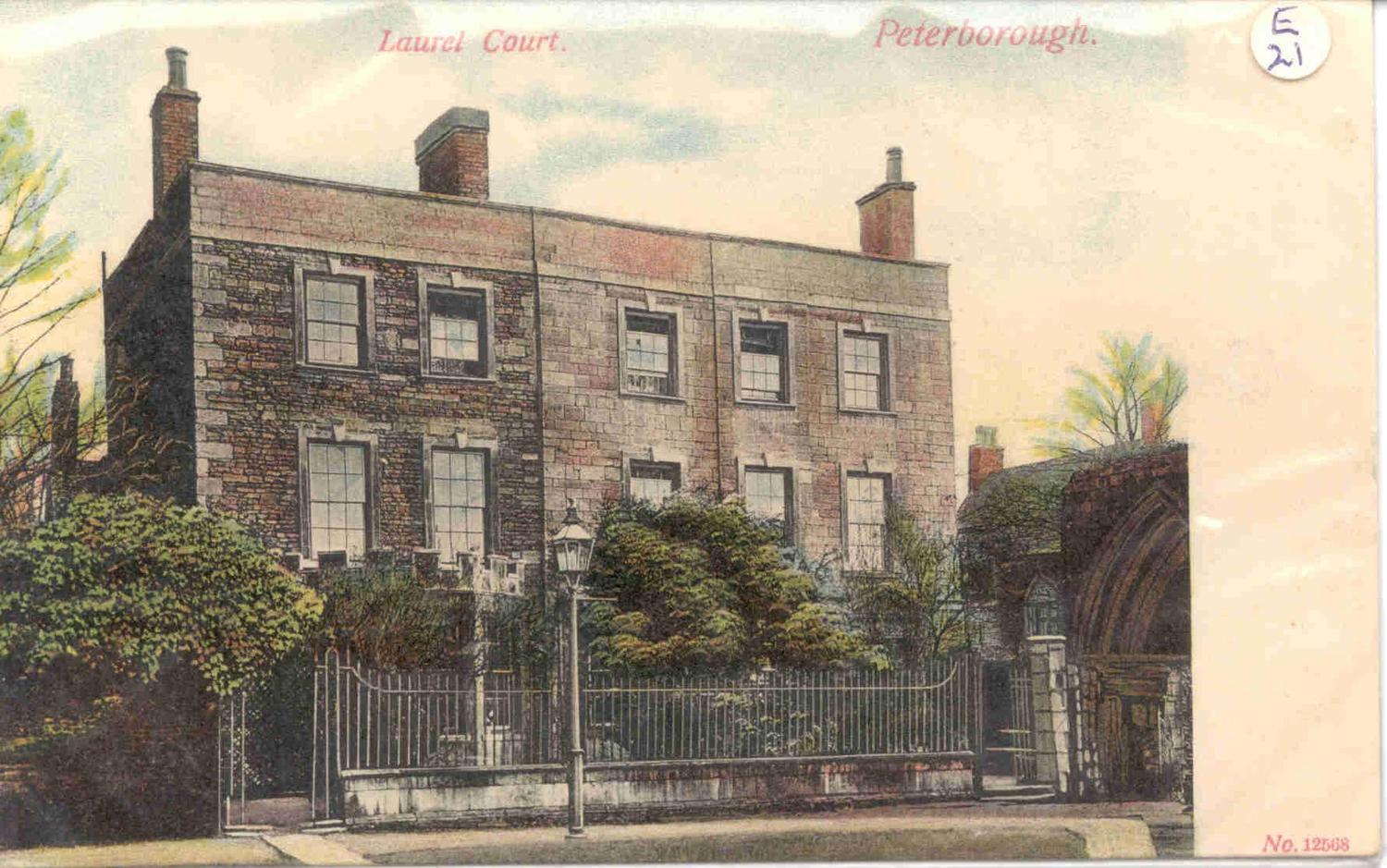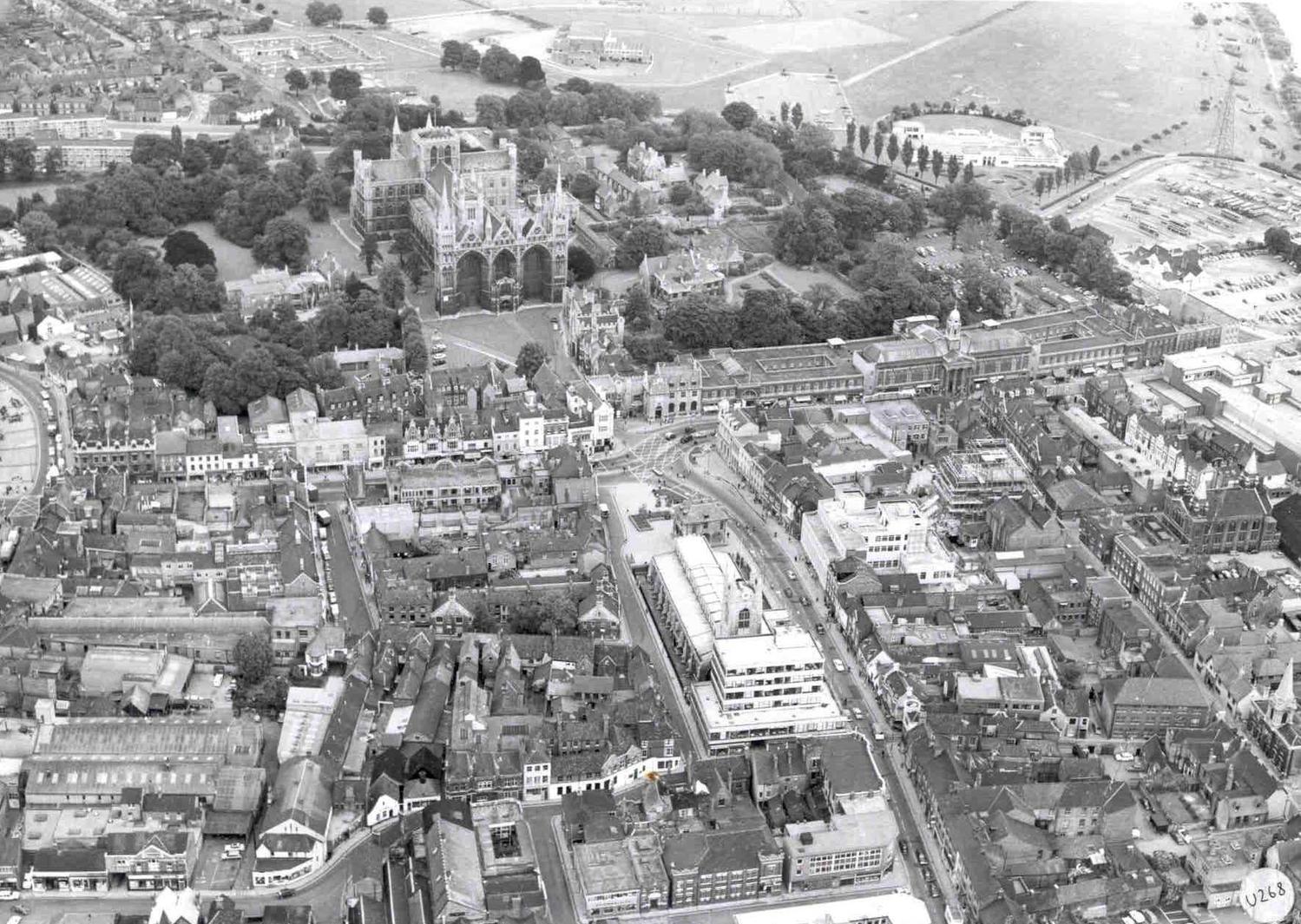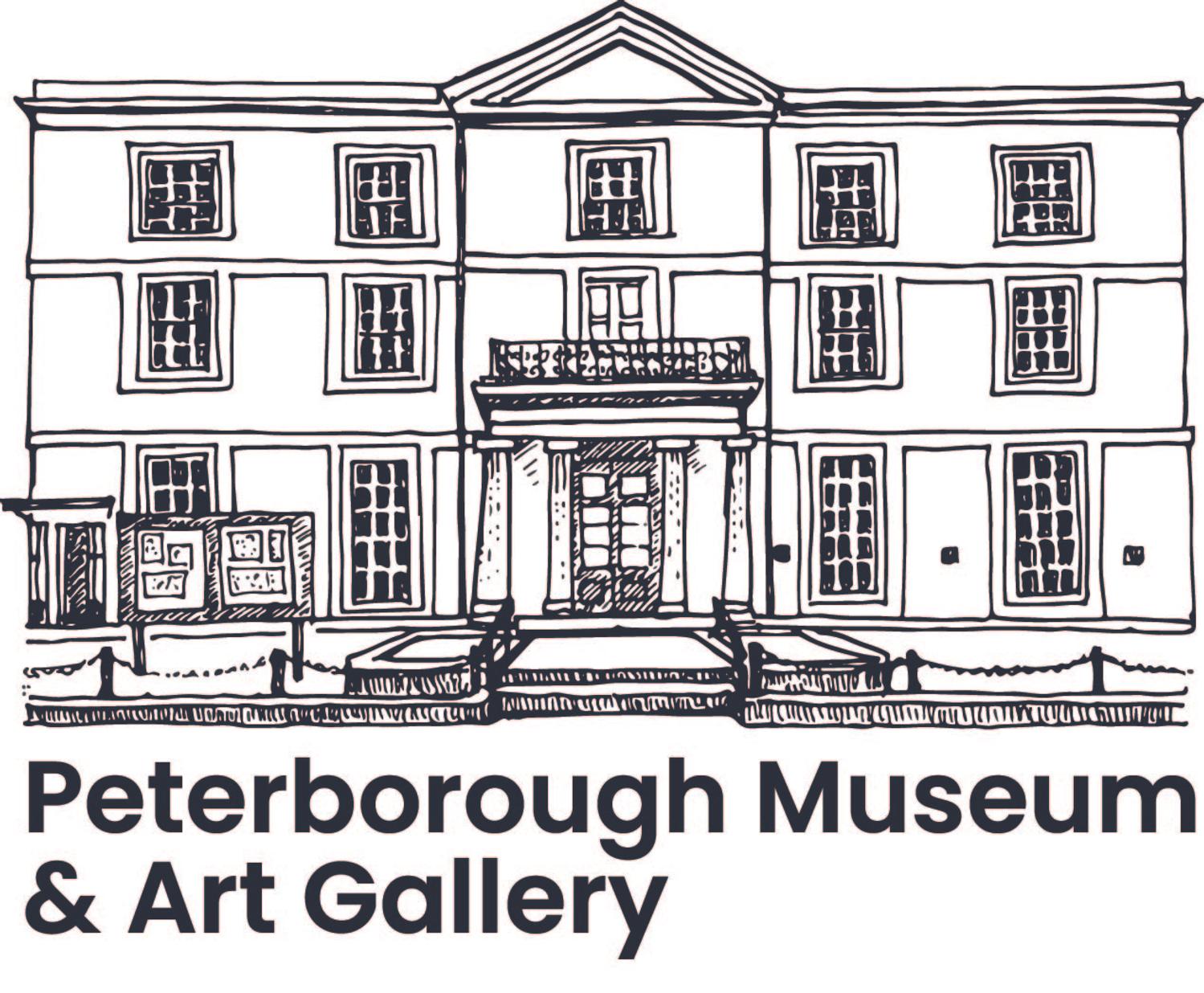Peterborough at War
Tuesday 14 November 2023
Local stories of Peterborough and the First World War 1914 - 1918
Outbreak of World War I 28th July 1914
World War 1 ( also known as the Great War) was a global conflict originating in Europe that lasted from 28 July 1914 to 11 November 1918. It led to the mobilisation of more than 70 million military personnel and directly resulted in an estimated nine million combatant and seven million civilian deaths. It completely changed the world, politically, economically and socially.
The immediate cause for World War 1 was the assassination in Sarajevo of the Archduke Franz Ferdinand of Austria, and his pregnant wife Sophie on June 28th, 1914. Archduke Franz Ferdinand of Austria was the nephew of Emperor Franz Josef and heir to the throne of Austria and Hungary. The assassin was a Bosnian revolutionary called Gavrilo Princip, but the assassination was planned by a Serbian terrorist group called The Black Hand.
Though the assassination was the trigger for war there were many political factors that led up to it. Before the onset of war there were a number of defence alliances between the major European countries, which meant that if one country declared war on another, the other allied countries would also have to enter the conflict. Germany was allied with Austria-Hungary, known as the Central Powers, whilst Britain, France and Russia were part on an alliance called the Triple Entente.
After the Archduke’s assassination Austria-Hungary threatened to go to war on Serbia, Germany supported Austria-Hungary and the Russians supported Serbia. One month after the assassination, on 28 July 1914, Austria-Hungary declared war on Serbia with the backing of Germany and on 1 August 1914 Germany declared war on Russia then, on 3 August 1914, on France.
On 4 August 1914, German troops marched on France through Belgium and, as Britain had guaranteed the neutrality of Belgium, Britain declared war on Germany. The first clash between British and German forces was on 23 August 1914 at the Battle of Mons in Belgium.
In Peterborough as soon as war was declared there was a rush of volunteers to a recruiting office established on Cathedral Square, in the first week over 160 men signed up. Peterborians joined local regiments like the Huntingdonshire Cyclists Battalion. 'Pals' units were made up of men from the same town or factory; men who worked for Werner, Pfleiderer & Perkins (now Baker Perkins) were recruited into 'Werner's Own' and ‘Whitsed’s Light Infantry’ was also made up of Peterborough men. Both of these were part of the Northamptonshire Regiment.




PETMG:SA48. Peterborough Museum


Execution of Edith Cavell 12th October 1915
Edith Cavell is the World War I British nurse who is celebrated for saving the lives of soldiers in Brussels from all sides without distinction. She and Belgian and French colleagues helped over 200 Allied soldiers escape from German-occupied Belgium. She was arrested, tried with 33 others by a German military court, found guilty of ‘assisting men to the enemy’ and shot by a German firing squad on October 12, 1915. Edith had attended the Laurel Court girl’s school in the Cathedral Precincts 1885-6 as a ‘Pupil Teacher’ in modern terms a cross between a teaching assistant and a sixth former. She learnt to speak French fluently whilst at Laurel Court, thus equipping her for working in Belgium, initially as a governess, later as nurse.
There is a memorial to Edith Cavell in the south aisle of the Cathedral.

Thomas Hunter, the Lonely ANZAC 31st July 1916
Thomas Hunter was born in County Durham in 1880 but emigrated as a young man to Australia where he worked as a coal miner. At the outbreak of the First World War, he, like many young men enlisted, in his case in the 10th battalion of the 10th division, ANZAC (Australian and New Zealand Army Corps) forces. He fought at Gallipoli and then in the trenches of France and Belgium. In 1916 during the Battle of the Somme, Sgt Hunter was badly injured, so severely that he was shipped back to England for surgery. He was put on a train for Halifax with other wounded but on the journey his condition worsened badly so he was taken off the train at Peterborough and brought to the infirmary where, sadly, on the 31st of July 1916, he died. As he died away from home and his comrades he came to be known as the 'Lonely ANZAC'.
His death touched the hearts of Peterborians, in a way he came to represent their young men away fighting. A public subscription fund paid for his funeral and a memorial. The mayor and civic dignitaries led the funeral procession to the Broadway Cemetery and the entire town came to a stop to pay their respects. A two metre tall granite cross was placed on his grave, and a brass plaque to his memory mounted in the military chapel in the cathedral.
Every year on ANZAC day, April 25th, a civil ceremony is held at his graveside, attended by the mayor, civic dignitaries and a representative from the Australian High Commission."
Flying Ace of World War I
Noel Keeble was born in Thorpe Road on 6 April 1891. He was a flying ace of the First World War and is credited with six aerial victories. Keeble joined the Royal Naval Air Service (RNAS) and in 1915 was assigned to a squadron in No. 1 Wing. They were based at Saint-Pol-sur-Mer, Dunkirk, France. In January 1916 he gained his first victory while flying a Nieuport single-seat plane. He managed to force down a German seaplane. In October 1916, flying a Sopwith Pup, he destroyed another seaplane. For this he was awarded the Distinguished Service Cross. His citation read:
Distinguished Service Cross. Flt.-Lieut. Noel Keeble, R.N.A.S. For conspicuous gallantry on the 23rd October, 1916, when he attacked four German seaplanes and brought one of them down in a vertical nose-dive into the sea.
Service in the RAF
On 1 April 1918, the Royal Naval Air Service was merged with the Army's Royal Flying Corps to form the Royal Air Force. Keeble became part of No. 202 Squadron RAF and flew a two-seat plane. His observer/gunner was Captain Eric Betts who went on to become an Air Vice Marshal in World War 2. He went on to bring down four more planes. His other great achievement, for which he was awarded the Distinguished Flying Cross, was to obtain 1000 valuable photographs of enemy positions behind enemy lines. His citation read:
Distinguished Flying Cross. Lieut. (T./Capt.) Noel Keeble, D.S.C. (Sea Patrol). This officer (with an observer) has obtained 1,000 invaluable photographs of enemy positions miles behind the lines, and has brought home extremely important new information during this period. He has destroyed eight enemy machines, including one biplane during the past month. Captain Keeble is a most capable and gallant Flight Commander.
Keeble remained in the RAF with the rank of flight lieutenant until August 1934, when he was placed on the retired list. He returned to RAF service during the Second World War and finally returned to the retired list with the rank of Wing Commander on 31 October 1945.
Sadly two of his three sons, who had followed him into the RAF died in combat missions during the Second World War.
Noel Keeble died in 1963.
References:
The London Gazette, 11 May 1917
The London Gazette, 20 September 1918
Peterborough & The Great War project
Jimmy the Donkey: War hero or Super Hoax?
Jimmy the Donkey was born in the early Twentieth Century and used to raise money for the RSPCA. He is commemorated in Central park, where he was laid to rest in 1943. His journey to Peterborough, however, is either one of heroic endeavours or a great hoax.
Jimmy was supposedly born in the trenches of World War I in 1916. He was rescued from No-Man's Land and adopted by the Cameronian Scottish Rifles who cared for him with their rations. He supported the soldiers by pulling and carrying what he could. So valuable was he to the regiment, that they made him a Sergeant and gave him three stripes.
After the war the donkey was bought by local RSPCA inspector, Mrs Heath, who took pity on him. The Cameronians were based in Peterborough for a short while in 1920 and that was when she bought him. She wanted to give him a good life and use the war hero to raise money for the charity. They offered rides in a small carriage pulled behind Jimmy and raised a huge amount for the RSPCA until his death in 1943.
However, George Wilding the son of a horse dealer, revealed that Jimmy's story had been a hoax. His father had bought the donkey and was having difficulty selling it, so he created its back story in the hope of a sale. This called into question whether Jimmy was the celebrated hero, or just an average donkey. But the donkey raised so much money for charity over the years, that he should be remembered, regardless of his birth.
The memorial is accessible in Central Park every day.
Queen Street Drill Hall Completed
The Queen Street Drill Hall was completed in 1868 by the 6th Northamptonshire Rifle Volunteer Corps, known officially as the Northamptonshire Battery, but by locals as the Peterborough Battery. The hall was built to provide a space to train men in military practices on a volunteer basis who would provide support to the armed forces in times of conflict. A large number of halls were built in the 1860s following a recruiting campaign in which 120,000 men signed up to join the volunteer service. The existing military facilities were unable to accommodate the large number of new recruits, so new drill halls were built to accommodate military drilling and provide a safe and dry location to store weapons and equipment.
Peterborough’s Drill Hall was on Queen Street and has therefore been lost under the footprint of Queensgate shopping centre. A report from a meeting in the Town Hall in April 1868 states that £400 had been raised to build a new drill hall on Queen Street and Mr Ruddle, based in Boroughbury, had drawn up plans for the building. At that time Captain Thomas Walker was in charge of the company and was ably assisted by Lieutenant Beecroft, Ensign Bristow, secretary Sergeant Smith and treasurer Sergeant Craig, who had secured the money for the building work.
One black and white image shows the roof of the building from an obscure angle, which hints at its vast size. It was a brick-built structure; drill halls were built to complement the other local buildings, so this matched into the neighbourhood. A description from the Peterborough Directory of 1876 tells us it was ‘by far the largest room in the city, and is thoroughly fitted for public meetings, lectures, concerts, etc.’ It was said to seat 800 people, which is the same as the Cresset.
The aerial image below shows one of the clearest pictures of the Drill Hall and queens street, it was taken ahead of the development of Queens Gate Shopping Centre. The Drill Hall is in the bottom left of the image, you can find the drill hall on this 1900's Ordnance Survey map.

References:
Peterborough, The Drill Hall Project - Charting a neglected legacy, https://www.drillhalls.org/Cou... Peterborough Rifles, Volunteer Service Gazette and Military Dispatch, 4 April 1868, pp. 5-6.
WUTAC at Peterborough East Railway Station
The Great Eastern Soldier’s and Sailor’s Rest Room opened on Christmas Eve 1915 at Peterborough East Railway Station. The rooms were managed by the Women’s United Total Abstinence Council (WUTAC), supporters of the temperance movement popular at that time.
During the first nine days alone, 321 servicemen called at the tea room. They were given food, drink and an opportunity to rest in comfort whilst waiting for their trains to and from the front. The ladies who managed the tea room encouraged the men to write in the visitors’ books, only two of which have survived from 1916 and 1917.
There are over 590 signatures in the books that reveal the servicemen came from across the United Kingdom and as far away as Australia. They wrote messages of gratitude, poetry and drew pictures expressing their appreciation for the service that the ladies were providing. These two slim volumes provide a brief insight into the thoughts and feelings of the men transiting through the city during the Great War.
The books have been digitised and transcribed and the servicemen’s personal histories researched in an effort to tell their story and trace their families.
Peterborough Great War Project
Peterborough & The Great War, was a fascinating three year project which researched and brought to life two visitors’ books from the first world war. These books were from the tea stall at Peterborough East Railway Station during 1916 and 1917, which was run by the Women’s United Total Abstinence Council.
Servicemen travelling through Peterborough on their way to and from the front lines, as they passed through they would write messages, poems or draw pictures to express their gratitude to the ladies serving them tea and cake.

